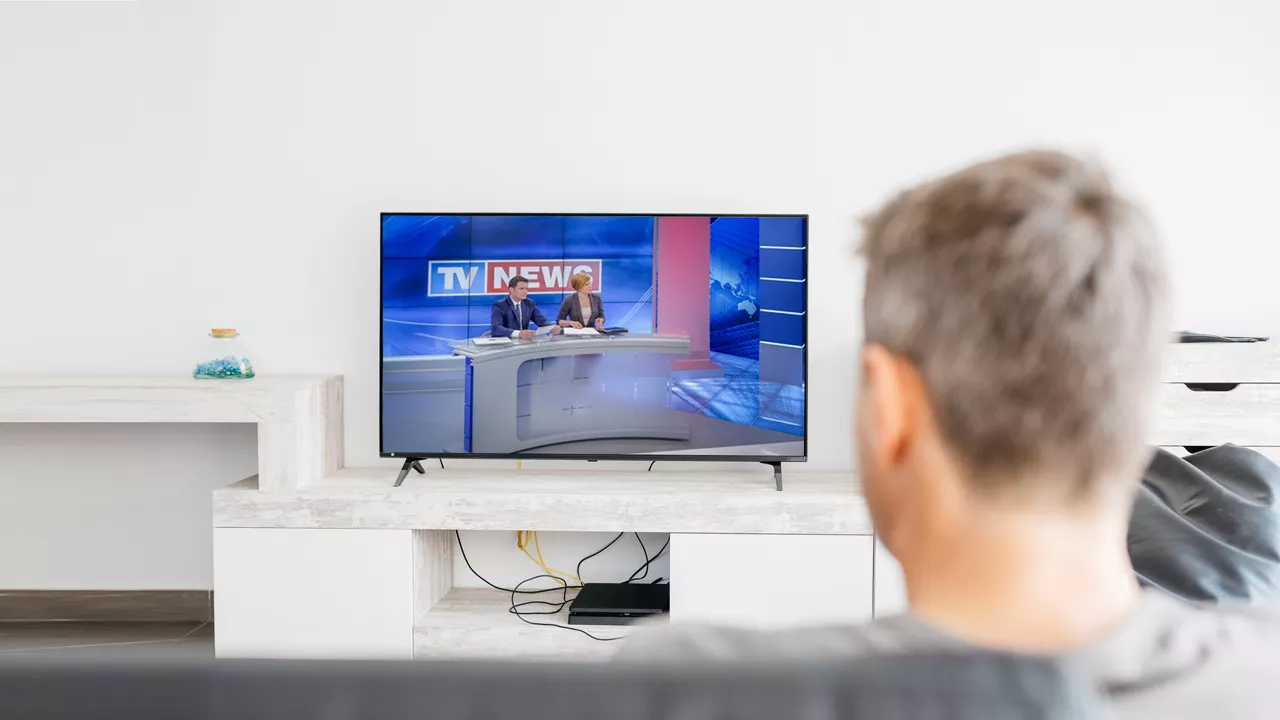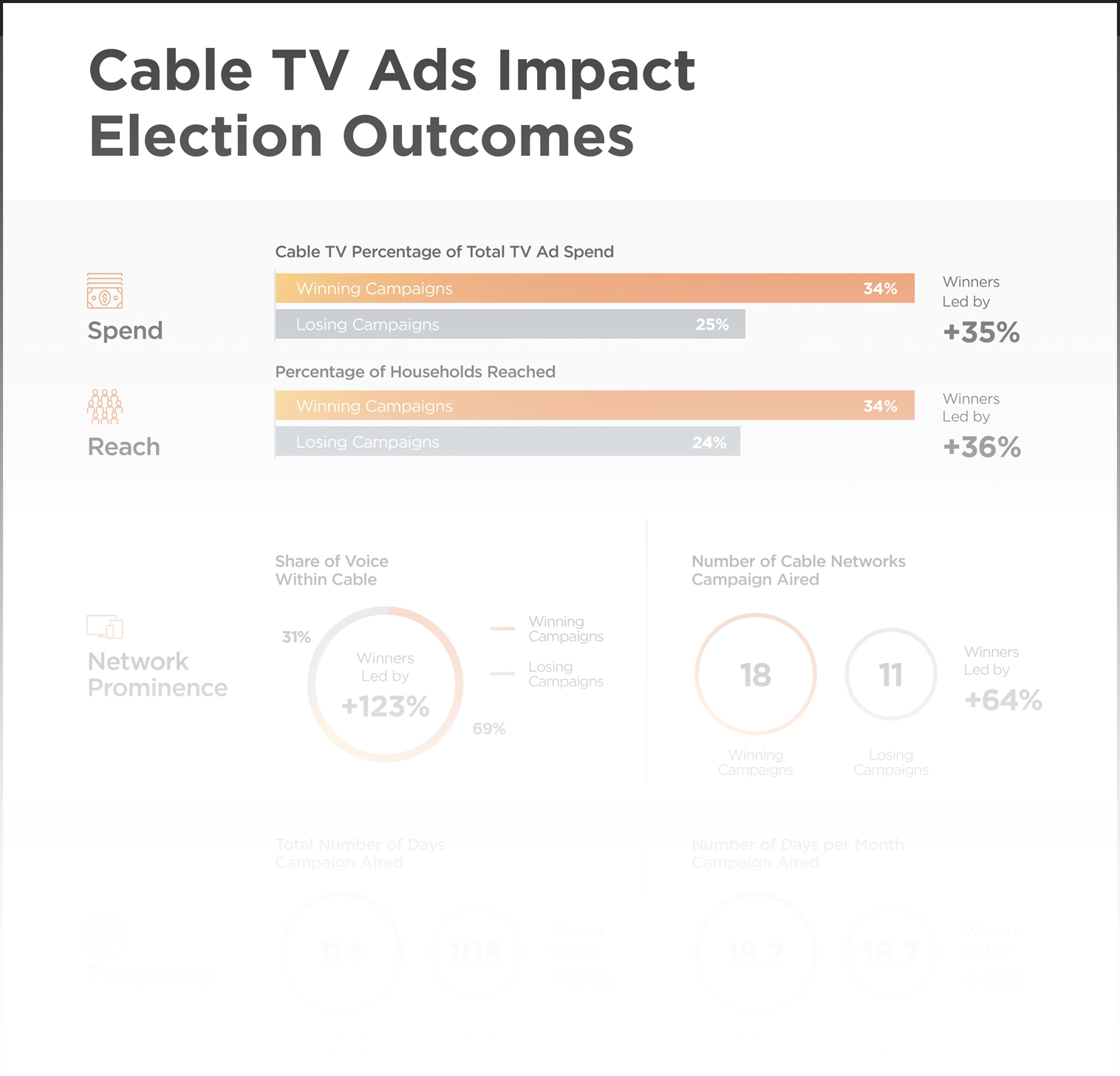In our last blog post, we shared why political candidates shouldn’t underestimate the connection between TV advertising and election outcomes. In this post, we’re sharing best practices for how political candidates can maximize the impact of their TV ad campaigns — based on data from dozens of campaigns. Here’s what we found…
Key Takeaways:
Political candidates can maximize their impact on TV by focusing on cable, broadening their reach beyond primetime hours and news networks, and using a range of creative messages tailored to different audiences.
Focus on Cable
According to Effectv research, viewers spend nearly twice as much time with cable news as they do with broadcast news. In particular, the most popular cable news networks are Fox News, MSNBC, and CNN. However, winning campaigns don’t limit themselves to just a few networks. The average winning campaign aired ads across 18 different cable networks, compared to 11 networks for losing campaigns, allowing them to reach more voters with a more diverse range of interests.
Winning campaigns also utilize longer flights on cable, as well as higher frequencies. The average winning candidate’s Effectv campaign aired +9% more days per month than the average losing candidate’s campaign and aired the 114 days leading up to the election, versus 105 days for the average losing campaign.
Air Outside of Primetime
It might be counterintuitive, but airing ads in primetime isn’t always the best way to reach voters. In fact, 80% of TV news viewing occurs outside of the 7-11 p.m. prime window. Airing ads outside of primetime allows campaigns to reach voters when there may be less competition from other candidates’ campaigns.
Don’t Limit Yourself to News Networks
Political campaigns tend to limit themselves to advertising on news networks, presumably under the assumption that people tuned into current events are more inclined to vote. In reality, Effectv data shows that winning candidates’ campaigns get 65% of their impressions from non-news networks, compared to 58% for losing candidates. This makes sense when you consider that viewers only spend 20% of their TV time watching the news.
Use Diversity in Creative Messages
There’s no “one-size-fits-all” approach to political messaging — winning candidates broaden their appeal by targeting different messages to different audiences and demographics. Effectv data backs this up, showing that winning campaigns averaged 4.7 different creative spots per month, or +16% more than the average losing candidate’s campaign. In other words, voters are diverse, and the advertising directed to them should be as well.
Our analysis shows that data-driven, reach- and frequency-focused TV campaigns make a difference in elections, especially when considered within a multiscreen strategy. We will continue to provide our insights from political races to help candidates make the most of cable TV advertising. Contact us to get started.
Want more? Download our Infographic:
It can be difficult for political marketers to know how and where to put their advertising dollars. Our research shows that candidates can shift the outcome of elections by investing more heavily in cable advertising to expand their reach and share of voice.
For more data from our study on winning campaigns, click below to download our infographic.





